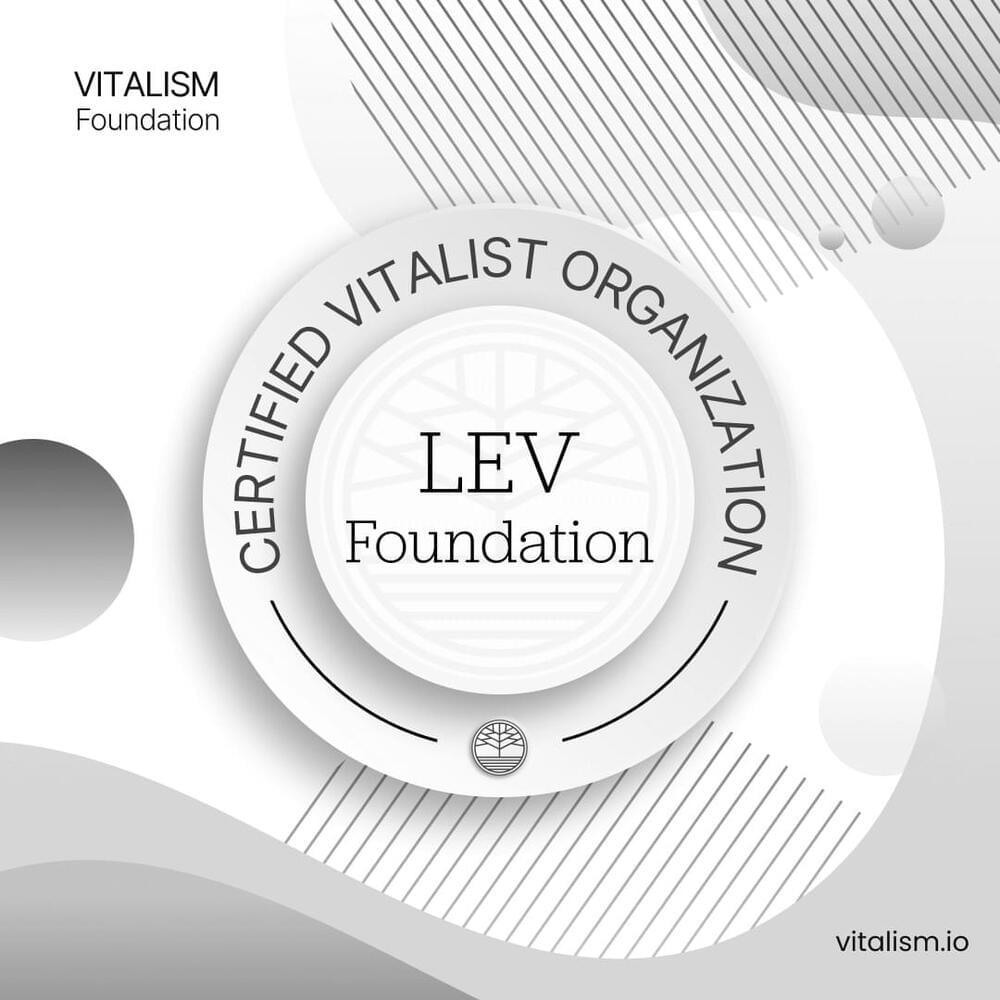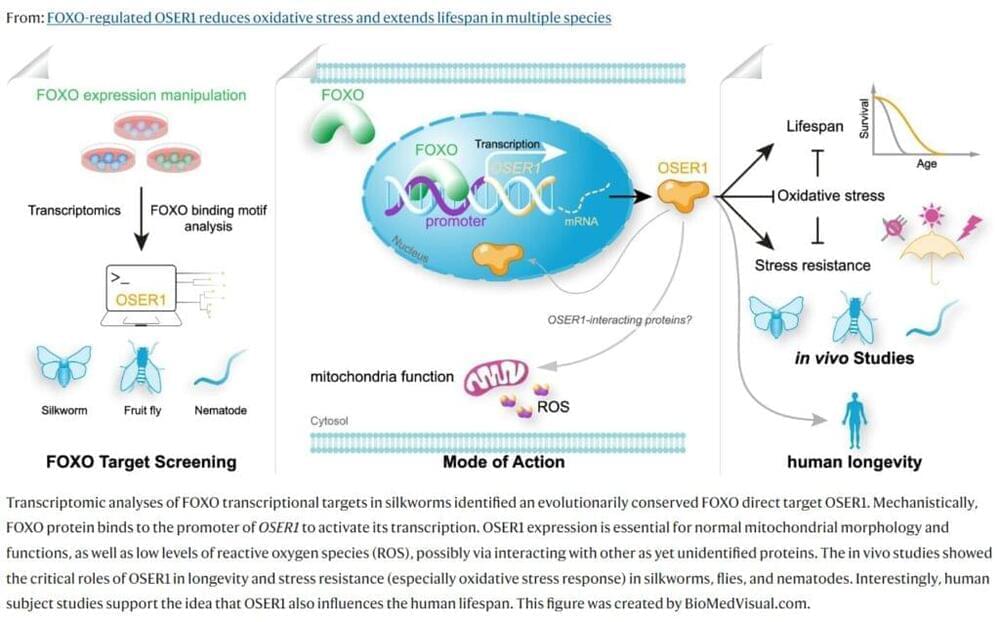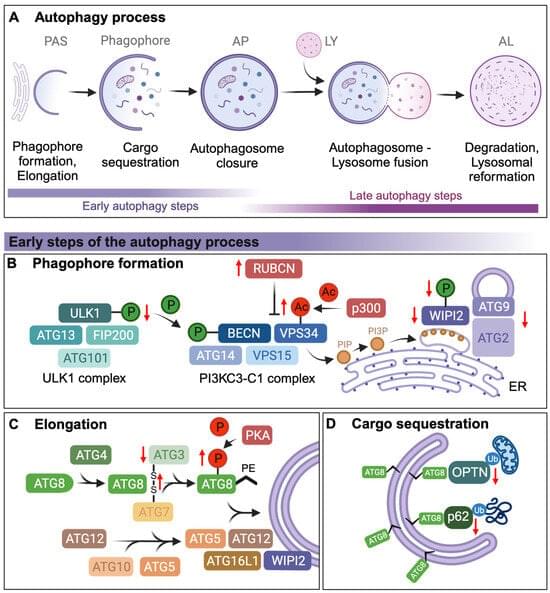The LEV Foundation is a nonprofit organization dedicated to advancing the field of rejuvenation biotechnology with the goal of reversing biological aging. Under the leadership of renowned gerontologist Aubrey de Grey, the foundation focuses on conducting early-stage research on animals, specifically testing combination therapies that aim to dramatically extend lifespan. LEV Foundation stands out in the aging research community by targeting middle-aged mice, developing treatments that could one day be applied to humans, helping achieve longevity escape velocity — the point at which aging can be controlled through medical interventions.
Archive for the ‘life extension’ category: Page 23
Oct 1, 2024
US scientist reveal mouth swab that can gauge your risk of death
Posted by Shubham Ghosh Roy in categories: biotech/medical, chemistry, genetics, life extension
U.S. researchers developed CheekAge, a tool that reliably estimates mortality risk.
Researchers in the United States have created a next-generation tool named CheekAge, which uses methylation patterns found in easily obtainable cheek cells.
In a groundbreaking discovery, the team has demonstrated that CheekAge can reliably estimate mortality risk, even when epigenetic data from different tissues are utilized for analysis.
Continue reading “US scientist reveal mouth swab that can gauge your risk of death” »
Sep 30, 2024
Can A New Pill Lengthen Telomeres & REVERSE Aging?
Posted by Shubham Ghosh Roy in categories: biotech/medical, life extension

Join our in-depth exploration of telomeres and their incredible potential in reversing aging! Discover the science behind telomere enhancement and how it can slow down the aging process. Featuring expert insights from Dr. Michael Roizen, this video unveils cutting-edge research that could change the way we view longevity. #AgingReversal #Telomeres #LongevityScience #DrMichaelRoizen #HealthInnovation #StemCellResearch #AntiAging #YouthfulLiving #Biotechnology #TelomerePharmaceuticals
Sep 29, 2024
Newly discovered Gene may Influence Longevity in Humans
Posted by Natalie Chan in categories: biotech/medical, life extension
Sleep, fasting, exercise, green porridge, black coffee, a healthy social life—there is an abundance of advice out there on how to live a good, long life. Researchers are working hard to determine why some people live longer than others, and how we get the most out of our increasingly long lives.
Now researchers from the Center for Healthy Aging, Department of Cellular and Molecular Medicine at the University of Copenhagen have discovered that a particular protein known as OSER1 has a great influence on longevity. The research is published in the journal Nature Communications.
“We identified this protein that can extend longevity. It is a novel pro-longevity factor, and it is a protein that exists in various animals, such as fruit flies, nematodes, silkworms, and in humans,” says Professor Lene Juel Rasmussen, senior author behind the new study.
Sep 29, 2024
Molecular Mechanisms of Autophagy Decline during Aging
Posted by Shubham Ghosh Roy in categories: biotech/medical, life extension
Macroautophagy (hereafter autophagy) is a cellular recycling process that degrades cytoplasmic components, such as protein aggregates and mitochondria, and is associated with longevity and health in multiple organisms. While mounting evidence supports that autophagy declines with age, the underlying molecular mechanisms remain unclear. Since autophagy is a complex, multistep process, orchestrated by more than 40 autophagy-related proteins with tissue-specific expression patterns and context-dependent regulation, it is challenging to determine how autophagy fails with age. In this review, we describe the individual steps of the autophagy process and summarize the age-dependent molecular changes reported to occur in specific steps of the pathway that could impact autophagy.
Sep 29, 2024
Siim Land’s Health, Fitness, And Longevity Approach
Posted by Mike Lustgarten in categories: biotech/medical, life extension
Sep 26, 2024
Targeted partial reprogramming of age-associated cell states improves markers of health in mouse models of aging
Posted by Cecile G. Tamura in category: life extension
Partial reprogramming with the Yamanaka transcription factors is considered to be a potential anti-aging strategy, but until now largely regarded as systemic intervention.
Reprogramming aged cells through targeted overexpression of Oct4, Sox2, and Klf4 leads to beneficial health effects in progeroid and aged mice.
Sep 24, 2024
Archaeologists Discovered an Ancient Chinese Immortality Potion. It Exposes the True Cost of Chasing Eternal Life
Posted by Shubham Ghosh Roy in categories: biotech/medical, life extension
Humans have been trying to cheat death for thousands of years. Myths about elixirs promising immortality span various cultures, as do real concoctions that often did more harm than good. One of the most misguided attempts at creating a potion for immortality involved the first emperor of China and mercury pills. In his obsession with finding a formula that would grant him eternal life, Qin Shi Huang downed mercury and other toxic substances nearly two millennia ago, believing his alchemists had hit upon the perfect magical tonic. Unsurprisingly, he died prematurely at age 49.
Archeologists have discovered another 2,000-year-old “elixir for immortality” that sheds light on the true cost of chasing down eternal life.
While excavating the tomb of a Western Han noble family in China’s Henan province in 2018, researchers unearthed a bronze pot. At first, the team thought the liquid inside was wine, but more recently determined that it was an alchemist’s formulation: a yellow liquid containing potassium nitrate and alunite. These two ingredients are cited in ancient Taoist texts as ingredients for immortality. Potassium nitrate is an inorganic salt used today as a natural source of nitrate, and is a useful ingredient in food preservatives, fertilizer, and fireworks. Alunite is a mineral that forms in volcanic or sedimentary environments when sulfur-rich minerals oxidize. It has historically been used to make alum, which is important for water purification, tanning, and dyeing.
Sep 23, 2024
Water-free manufacturing approach could help advance 2D electronics integration
Posted by Dan Breeden in categories: life extension, materials
The future of technology has an age-old problem: rust. When iron-containing metal reacts with oxygen and moisture, the resulting corrosion greatly impedes the longevity and use of parts in the automotive industry. While it’s not called “rust” in the semiconductor industry, oxidation is especially problematic in two-dimensional (2D) semiconductor materials, which control the flow of electricity in electronic devices, because any corrosion can render the atomic-thin material useless. Now, a team of academic and enterprise researchers has developed a synthesis process to produce a “rust-resistant” coating with additional properties ideal for creating faster, more durable electronics.
The team, co-led by researchers at Penn State, published their work in Nature Communications (“Tailoring amorphous boron nitride for high-performance two-dimensional electronics”).
These materials are made from molybdenum disulfide, a two-dimensional semiconductor, grown on a sapphire surface. The triangular shapes seen are aligned because of a special process called epitaxy, where the material follows the pattern of the surface it’s grown on. Insulating layers, like amorphous boron nitride, are added during the process of making these ultra-thin materials, which are used to build next-generation electronic devices. (Image: J.A. Robinson Research Group/Penn State)
Sep 23, 2024
E5 treatment showing improved health‐span and lifespan in old Sprague Dawley rats
Posted by John Davies in categories: biotech/medical, chemistry, life extension
In the present investigation, the SD rats were separated into two groups old control group and the treatment group (n = 8). The treatment group received four injections of E5 every alternate day for 8 days, and eight injections every alternate day for 16 days. Body weight, grip strength, cytokines, and biochemical markers were measured for more than 400 days of the study. Clinical observation, necropsy, and histology were performed. The E5 treatment exhibited great potential by showing significantly improved grip strength, remarkably decreased pro-inflammatory markers of chronic inflammation and oxidative stress, as well as biomarkers for vital organs (BUN, SGPT, SGOT, and triglycerides), and increased anti-oxidant levels. Clinical examinations, necropsies, and histopathology revealed that the animals treated with the E5 had normal cellular structure and architecture. In conclusion, this unique ‘plasma-derived exosome’ treatment (E5) alone is adequate to improve the health-span and extend the lifespan of the old SD rats significantly.

















